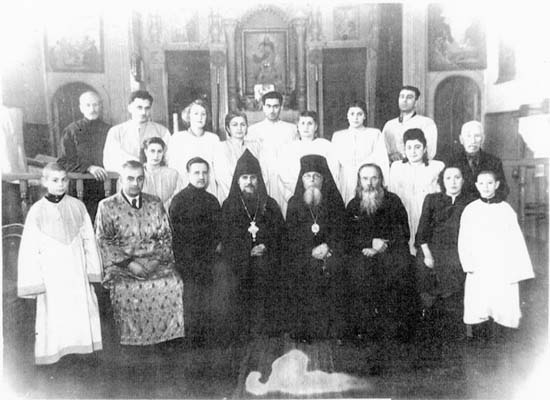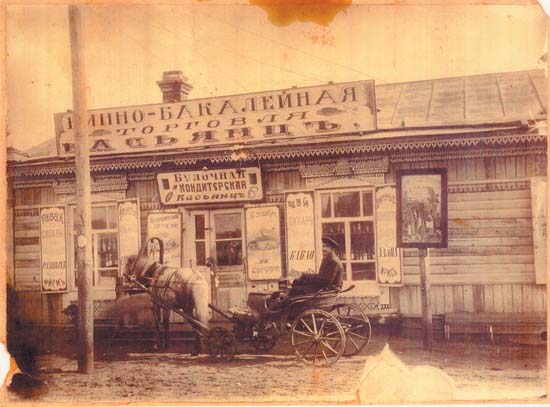Virginia Meltickian of Fresno, California, has donated an archive of photos and articles about the Armenian community in China. Her “Memory” Album encompasses the time period from the beginning of the last century to the 1950s, when the Armenians had to leave China due to the change in political situation of that country. Some Armenians went to Armenia, others to Australia, Canada, South America, Europe and the United States.
Two families in addition to Virginia Meltickian were instrumental in providing these photos: Mrs. Natalia (Azatian) Lukin of Sao Paulo, Brazil and Mrs. Vartanoush Kassiants of San Francisco, California.
By Virginia Meltickian
Armenians lived in China long before the twentieth century, but because the twentieth century brought us the first Genocide, followed by the Russian revolution, our people fled their respective homes in Turkey and Russian Armenia. The only available road was via Trans-Siberian railroad all the way to Manchuria, the northern province of China.

These Armenians have survived the genocide, the world depression of 1930s, the Japanese occupation of Manchuria in 1932 and the takeover of the country by the Chinese communist army -The Paludiun, i.e. the Eighth Army, headed by Mao-Tse-Tung.
These Armenians rebuilt their lives, formed families, had children, and built a church in the city of Harbin in 1927. They worked hard and gave their children a good education so that the new generation would go ahead and lead productive lives and always keep their identity through their faith, their church and their nation.
As a daughter of a survivor, born and educated in China, it occurred to me that from historical perspective it might be useful to prepare an album which would [provide] evidence [on] the existence of Armenians in China. I hope that this small contribution to the Fresno State Armenian Studies Program would be of help in the overall picture of our people’s history.
July 1, 2003
Fresno, CA
Excerpts from a Russian-
language magazine published in Australia circa 1970.
National Groups in
Harbin (China)
The Armenian National Group
The first Armenians who appeared in Manchuria (N. China) during the construction of the Chinese Eastern Rail Road, undertaken by the Imperial Russia, were few. (*) The railroad was called in Russian language- Kitayskaya Vostochnaya Zheleznaya Doroga-KVZHD. Only after the Russian-Japanese War did their numbers increase. This necessitated the creation of an Armenian National Organization for the purpose of helping their needy countrymen and the preservation of their national heritage.

The Armenian National Organization was headed by the Board of Directors, whose President for many years was Dr. C. G. Migdisov, along with Mr. Ter-Ovakimov, an engineer with the KVZHD and Nr. Melik-Ogandjanov, an attorney. The Armenians jokingly called them the three giant whales on whose back the Armenian community of the city and the region was sustained.
The Armenian National Organization was founded in 1917. Its statute was approved by the local authorities in 1919. By 1923, they succeeded to build their own church and adjacent to it a social hall located on Sadovaya Street.
Because most of the members of the Armenian colony lived in Harbin and had the only Armenian church in China, with residential quarters for their priest, Fr. Yeghishe Rostomiants, the spiritual leader of all Armenians in Manchuria, China and Japan, Harbin became the center of the Armenian national life.
One of the main tasks of the Armenian Organization was to solve the problems of assistance to the needy members, such as the elderly, the poor, the orphans and generally all those who needed one or another kind of help.
Undoubtedly, the Organization also responded to the requests of other benevolent organizations giving their share.
The charitable works of the Armenian Organization was mainly done by their Ladies Aid Group, who carried out a very useful and important work of fund-raising to support their charitable works in organizing bingo games, collecting donations, etc.
(*) Translator’s note.
Finally, the most important task of the Board was to preserve the national heritage and spirit among the members of the colony. To this effect, the Board organized social events, staged national and literary plays, performed by the youth group in their native language. On the national and religious holidays, tea parties were also organized. Classes to study Armenian language and literature also were held. The theatrical plays were performed at the prestigious Commercial Club and the Tchurin Club, where “Anahit” drama and the “Arshin-Mal-Alan “musical were performed, featuring the lead—singer, Karine Psakian.
Armeno-Gregorian Church
Until 1918, the city of Harbin had in the district of Noviy Gored an Armenian House of Prayer.
In 1918, the KVZHD (Chinese Eastern Railroad) had granted the Armenian Colony a piece of property on 18, Sadovaya Street, corner of Liaoyang Street, where they began to build the Far-Eastern Armeno—Grigorian Church, which took several years to complete. The name “Far-Eastern” derived from the fact that Rev. Fr. Yeghishe Rostomiants and his family emigrated to Harbin from Vladivostok, where evidently his church was closed.
The church in Harbin began officially to function in the 1920s. In 1925, the Chinese Authorities have registered it as the Armeno-Grigorian Church of Harbin. The church was erected in memory of St. Gregory the Illuminator.
In 1932, Fr. Yeghishe Rostomiants passed away. The Armenian Church became orphaned. For several years thereafter the church was without a Pastor and the premises were rented to the members of the Lutheran Congregation, who later built their own Kirche (church).
In 1937, thanks to the initiative and efforts of Mr. Ter-Ovakimov, President of the Armenian Organization, a priest was brought from Jerusalem – Rev. Fr. Assoghig Ghazarian (who recently passed away and whose Rank at the time was Archbishop).
Rev. Fr. Assoghig was educated in the monastery, after his parents were killed by the Turks. At the time of his arrival in Harbin, he was only 27 years old. He was well-educated and spoke five languages.
The Armenian Colony, numbering at the time about 350—400 persons, felt very fortunate once again to have a Pastor.
During the period of 1938—1950, Rev. Fr. Ghazarian, who was greatly respected and loved by his parishioners, did many good things for the Armenian Church. The building adjacent to the church has been enlarged and renovated, thanks to the financial backing of large contributors and businessmen (Messrs. C. Eloyan, I. Avetisian, A. Elyasov and others); during the construction of the Church itself it too was built with money donated by the members (the largest contribution was made by Mr. K.C. Aspetian). All members of the Armenian Organization gave according to their means, and some others donated their labor.
In 1950, Rt. Rev. Fr. Assoghig Ghazarian (who during WWII 1941—1945 ended up in the Concentration Camp for British and American citizens in the city of Moukden) (**) returned to Jerusalem and the Armenian Church once again remained without a Pastor.
Subsequently, during the following years, due to the mass-exodus of Armenians from Harbin, their colony dwindled down to a mere 40-50 persons.
In 1959, the building of the Armenian Church changed hands and became the property of the Chinese Government, which in turn used it for a textile factory.
In August of 1966, during the “Cultural Revolution,” the time period where all churches in Harbin were demolished, all the treasures of the Armenian Church kept in the altar for several years, such as the ikons, the vestments – were all taken out, dumped into the yard and burned…….
(**) Rt. Rev. Fr. Assoghig Ghazarian was a British subject, because Jerusalem was a British Protectorate.
Translated by: V. Meltickian — August 20, 2003.
 Hye Sharzhoom Armenian Action
Hye Sharzhoom Armenian Action